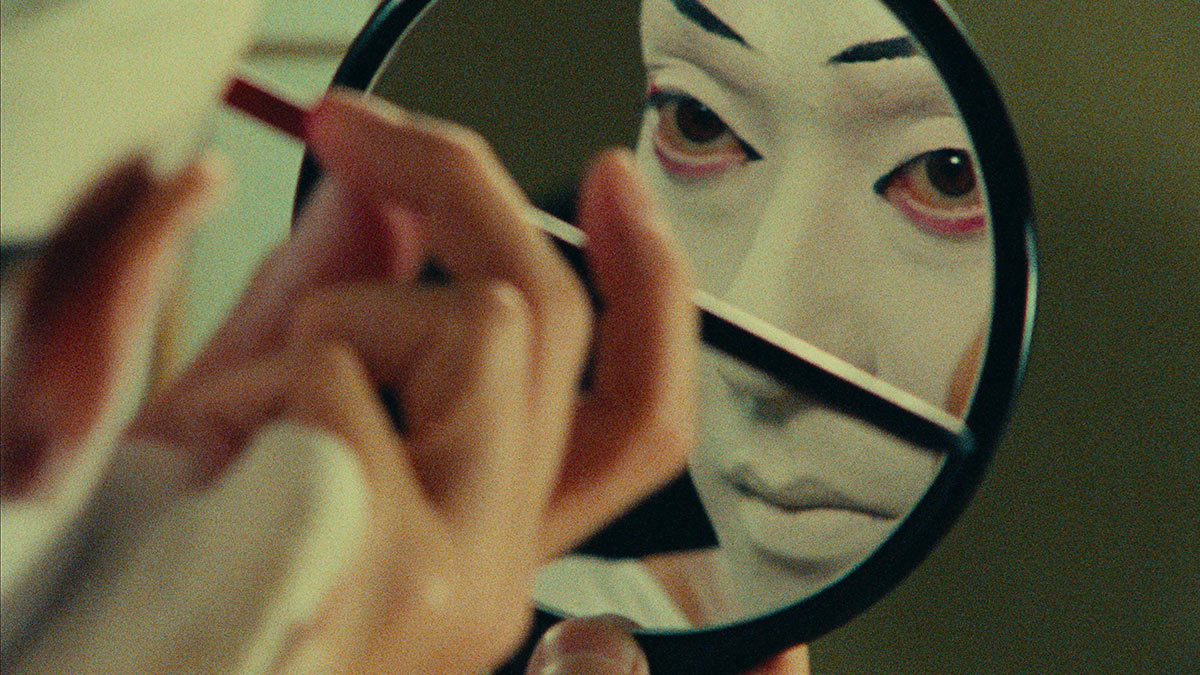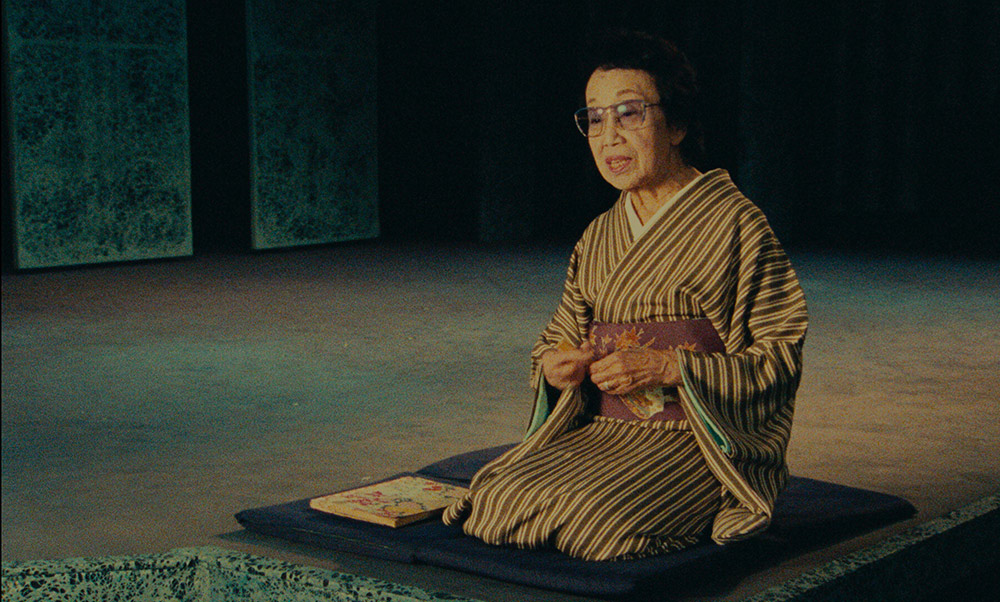
(C)1995 T&C FILM AG / EURO SPACE
“The Written Face” is all about the stage = for the beauty of life
2023.03.14
be disturbed
The scene in ``The Written Face'' where Tamasaburo Bando puts on makeup with a hand mirror in one hand has an aesthetic quality that once you see it, you'll never forget it. The vanity table is beautifully arranged, as if it were the starting point for all beauty. The trust placed in the filmmaker Daniel Schmidt makes this beautiful cinematography possible. Regarding Onnagata, Tamasaburo Bando has been studying the ``lines'' of women in Japanese paintings since he was young.
"I tried to understand the facial expressions, lines, and atmosphere that support the beauty of the painting.Specifically, the amount of hem, the way the obi is tied, the way the head is tied, and the posture."
``The beautiful lines and gestures that a woman has, in other words, what makes her called beautiful is not so much because of her well-structured face, but because of the lines of her overall appearance and the things that come out of them. ” (Tamazaburo Bando) *1
When I look at Tamasaburo Bando in this work, I think of a woman who lives in a poetic image rather than a fictional image of a woman. More than just the beauty of Tamasaburo Bando's female role, I think of the beauty of the invisible ``lines'' with which Tamasaburo Bando draws the image of a female role. The way you dance, the way you walk, the tone of your voice, the little hand gestures you make when you speak, the grace and pride. What kind of costumes and props is that person wearing? In other words, what costumes and props did the person choose? Haruko Sugimura, answering an interview, folds the folding fan one by one. How did you live your life there? That's her choice. The beauty of the actions of all the characters is the biggest charm of this work.

“The Written Face” (C)1995 T&C FILM AG / EURO SPACE
In this sense, it is highly suggestive that this film quotes footage from Mikio Naruse's masterpiece `` Bangiku '' (1954), in which Haruko Sugimura starred. This is the scene in which Kin Kurahashi (Haruko Sugimura), a former geisha who can be called the Ice Lady, prepares herself for a reunion with the love of her life (Ken Uehara). As if she has returned to her geisha days, she begins to adjust her face and hair in front of the mirror, feeling as if she were a young girl (and her beloved is spying on her as she prepares!).
For the retired geisha women in Bangiku , their age and lifestyle are expressed by their foreheads, hairline, and the way they tie their hair. And `` Bangiku '' discovers the beauty of human life in their messy hair and emotional breakdown. This resonates with Daniel Schmidt's documentary film `` Tosca's Kiss '' (1984), which follows retired opera singers. Retired geisha and opera singer. I can only think that Daniel Schmidt's love for `` Last Chrysanthemum '' was almost an inevitable fate.

